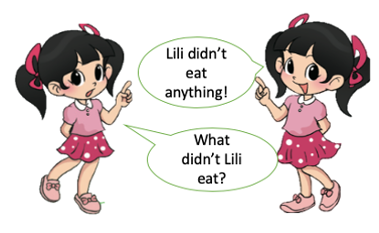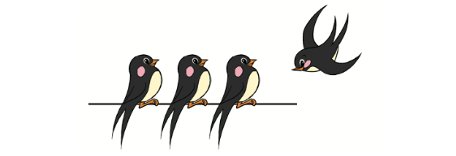projects
My research concerns structures that indicate, not only what a speaker is saying, but also why they are saying it, and how it is supposed to relate to the conversation. I approach these structures in two ways: as a semanticist, I look for the simplest analysis of these structures; as an acquisitionist, I ask how children acquire these meanings. Here are some of my projects:

Learning speech acts and clause types
semantics, acquisition, cognitive modeling
We use language to perform various kinds of communicative acts - providing information, asking questions, making requests, etc. In any language, there are specific signals in the form of a sentence that indicates what communicative act it is typically used for. But these signals vary from language to language. In this project, we ask how children learn to identify the communicative acts of the people speaking to them while learning the surface signals associated with these acts.
- Output: dissertation
Mandarin pose an additional problem: its wh-words (e.g. shenme “what”) can function as question words (like English what) or indefinites (like English any, Cheng 1991 a.o.). I explore the acquisition of the indefinite meaning (joint work with Daniel Goodhue, Valentine Hacquard, and Jeffery Lidz, and find that three-year-olds are sensitive to this ambiguity.
- Output: slides; contact me for a copy of our paper
I also use corpus data to show that the indefinite interpretation is not a Negative Polarity item (contra Lin 1996 among others) but a modal indefinite (joint work with Mingming Liu).
- Output: paper

Speech act modifiers
semantics, pragmatics
Many languages have devices that affect the default discourse effects of certain speech acts. In this project, I discuss the effects of the Mandarin discourse particle ba on questions and assertions. This particle appears to weaken the forcefulness of assertions, but it has been claimed to have the opposite effect on questions, making them more forceful ‘‘you must answer this question.’’ I discuss new data showing that ba-declaratives are not always ‘weak’ and ba-interrogatives are not stronger than unmarked interrogatives in the same context, which is not explained by current theories. I propose that, uniformly, ba is used to mark its prejacent as contributing to an issue it represents as open, and the correlation with clause types is an epiphenomenon.

Attitude Verbs
acquisition
In this project, I’m interested in Mandarin-speaking children’s knowledge of attitude verbs, and how do they come to learn these attitude verbs. For the first question, I conducted behavioral studies exploring children’s understanding of juede “think” (collaborative work with Valentine Hacquard, and Jeffery Lidz).
How do children learn the subcategorization property of attitude verbs (e.g. know selects both declaratives and interrogatives, but think only selects declaratives)? I examined children’s input to see what kind of information is available to children (collaborative work with Nick Huang).

Cleft construction and exhaustivity
semantics, pragmatics
We used three experiments showing that Mandarin shi…(de) clefts encode exhaustivity as part of its presupposition, which is different from zhiyou “only” and answers to constituent questions. We also show that 6-year-olds have problem interpreting this exhaustive meaning in clefts, but not the other exhaustivity-inferring constructions (collaborative work with Liu Ying).
Output: NASSLLI/ESSLLI2016,Glow-in-Asia2017, NELS47